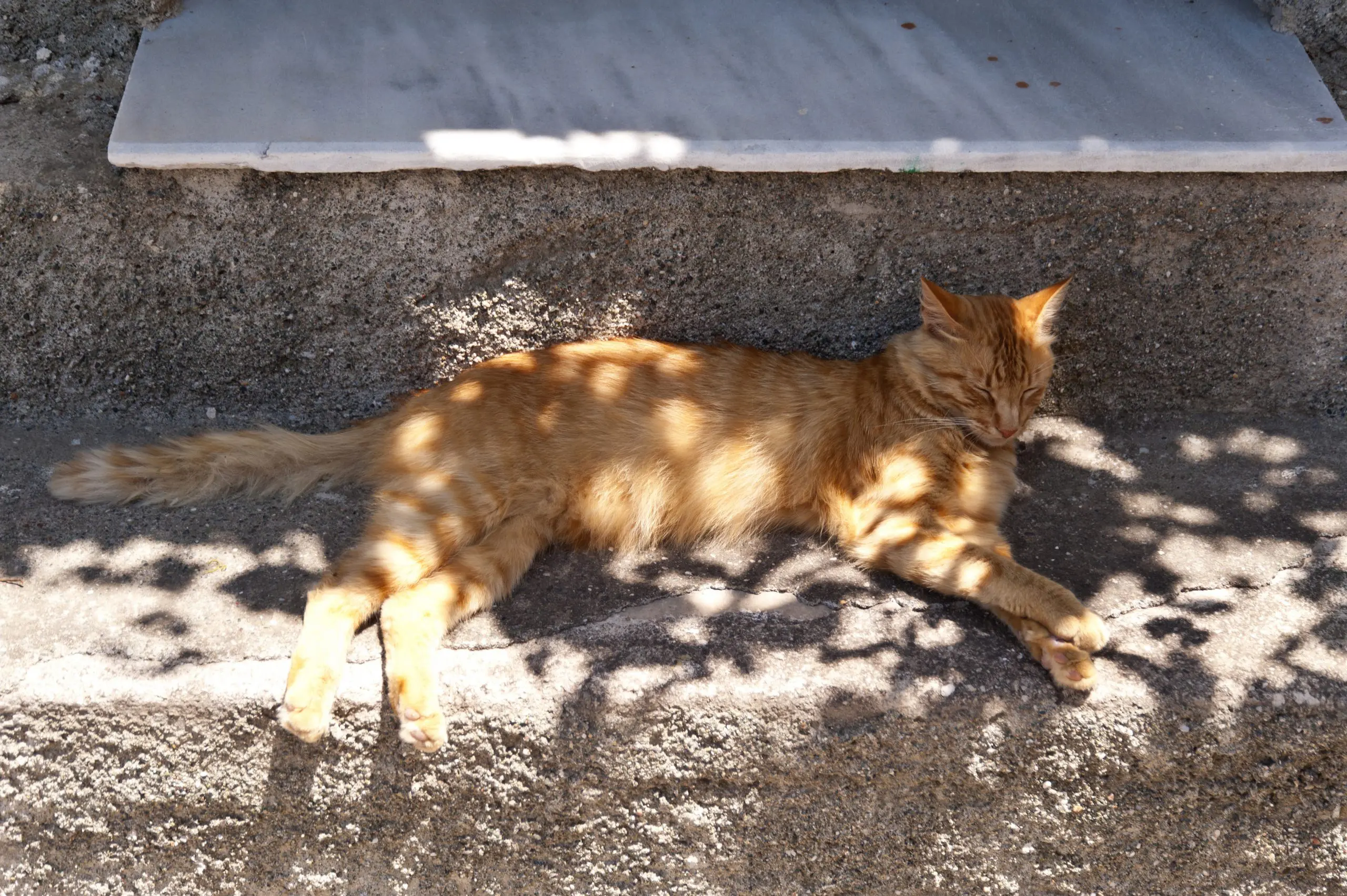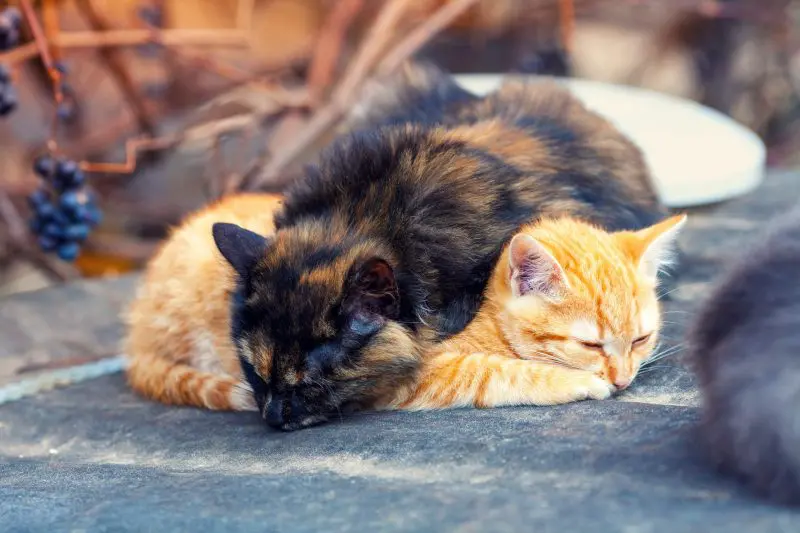Before jumping to any conclusions, you have to make sure the cat that’s tailing you is actually a stray cat.
People often mistake stray cats for feral cats because of their striking similarities.
However, some subtle differences can help you distinguish between the two.
For instance, stray cats are domesticated.
They probably lived in a home and are quite familiar with human behavior.
Therefore, they’re more likely to approach us for food and shelter.
Cats can become homeless for various reasons.
Their previous owners may no longer have the resources to take care of them.
Sometimes, they wander away from their home and can’t find their way back.
Other times, their pet owners deliberately abandon them to the streets.
Whatever the reason, because a stray cat has some social experience, it’s more inclined to rely on humans for help.
Feral cats, on the other hand, are creatures of the wild.
Their encounter with humans is limited, if not nonexistent.
This is why they’re often unapproachable and defensive around people.
They’re also experts at fending off food and shelter for themselves and barely require our help for survival.
The likelihood that a feral cat has taken a liking to you is minimal.
However, it’s important to know their defining features.
Most feral cats are not fit for adoption and may even carry contagious diseases.
Reasons Why Stray Cats Follow People
If a stray cat follows you, nine out of ten times, it wants something from you.
Some of the most common reasons why cats cross their paths with humans are:
Hunger
This shouldn’t come as a shock.
Any animal who’s looking for a sustainable food source will do anything in its power to pursue it.
Its survival depends upon it, so it’s only fair.
Stray cats are no different.
If they’re hungry, they’ll come close to you and roll their kitty eyes to plead for food.
Cats are clever beings.
Once a human has fed them, they know that it can happen again.
In some cases, if the cat is a bit tentative, it will keep its distance and think twice before coming close to you.
However, as long as you don’t scare it away, it will keep the trail alive.
Shelter
Cats know humans have homes where they can set up a cozy cushion for a good night’s sleep.
They have a pretty good memory of living indoors.
Especially when the winter season is in full swing, you’ll see lots of cats roaming around houses.
Especially in harsh outdoor conditions, they’re desperate to find some warmth and shelter.
Curiosity
Another reason cats might start chasing you around is curiosity.
You might’ve held or had something that is of interest to them, and they might be looking for a way to study it closely.
In fact, cats are such persistent and curious beings that a mere glimpse of food sets their alarm off.
Once they know you have something they want, there’s little that’ll stop them from investigating it.
However, they also need to know that you won’t pose any harm.
They’ll only take a step closer to you if you don’t frighten or startle their bones out.
How Can You Help a Stray Cat?
If a stray cat gets close enough, here’s what you need to do:
Find the Owner If Possible
First, you have to confirm whether the cat has an owner or not.
Check its collar for an address or a name tag.
Then, get in touch with the owner and arrange a happy reunion.
But, before handing the cat, make sure there’s no indication of animal abuse.
If the cat doesn’t have anything to suggest that it has an owner, have a good look at its condition.
Its coat will give you a good idea of how long it’s been a stray.
You also need to look for other signs that might indicate medical attention.
If the cat is well-kept and seems to belong to a loving home, you can spread the word that it’s in your possession.
You can write a short social media post with the stray’s picture or distribute posters in your neighborhood for starters.
Whatever you can do to make the cat and its owner happy will work.
Take Care of the Stray
While you’re looking for the cat’s owner, don’t forget to give it some care and love.
It’s probably lost and anxious and needs your warm and loving hands now more than ever.
If you can take it into your home and feed something, then that’s what you should do.
If not, you can at least pet it and give it some food and water.

Consider Adoption
More than 70 million stray cats do not have a home.
This is a serious concern. According to one other statistic, only 2% of strays are returned to their owners.
This means you might have to consider adoption if you don’t want the cat to end up in the streets.
Some shelters might be willing to help, but it’s quite likely they’re at maximum capacity to accommodate a new arrival.
While you don’t have an obligation to home a cat, you should, at the very least, consider this option.
You might just end up saving a feline life.







